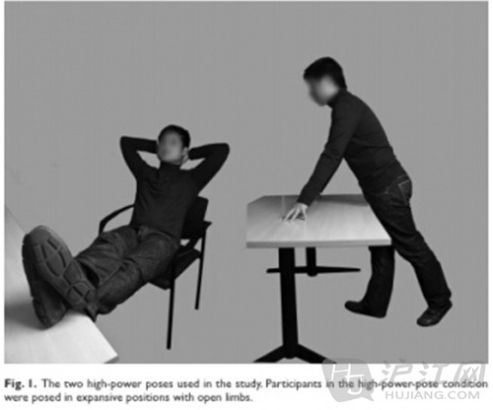双语:FBI二十六招教你读心术
 解读人心第一招
解读人心第一招
 解读人心第二招
解读人心第二招
 解读人心第三招
解读人心第三招
 解读人心第四招
解读人心第四招
 解读人心第五招
解读人心第五招
 解读人心第六招
解读人心第六招
 解读人心第七招
解读人心第七招
 解读人心第八招
解读人心第八招
 解读人心第九招
解读人心第九招
 解读人心第十招
解读人心第十招
 解读人心第十一招
解读人心第十一招
 解读人心第十二招
解读人心第十二招
 解读人心第十三招
解读人心第十三招
 解读人心第十四招
解读人心第十四招
 解读人心第十五招
解读人心第十五招
 解读人心第十六招
解读人心第十六招
 解读人心第十七招
解读人心第十七招
 解读人心第十八招
解读人心第十八招
 解读人心第十九招
解读人心第十九招
 解读人心第二十招
解读人心第二十招
 解读人心第二十一招
解读人心第二十一招
 解读人心第二十二招
解读人心第二十二招
 解读人心第二十三招
解读人心第二十三招
 解读人心第二十四招
解读人心第二十四招
 解读人心第二十五招
解读人心第二十五招
 解读人心第二十六招
解读人心第二十六招
1.To start, always get a baseline reading so you can distinguish personal quirks from real tells。
首先,你要进行一些对于价值基准的理解,那样你才能区分个人癖好和真正能告诉你对方想法的东西。
2.Notice others trying to read your baseline with seemingly innocuous questions like, "How are you today?"
发觉别人试图通过貌似无关痛痒的问题打探你的价值基准,比如“你今天过得怎么样?”。
3.When you have a chance to ask questions, be pointed and observe without interrupting。
当你有机会提问时,要直截了当,并不断地观察。
4.An expansive pose means somebody feels like they're in power; when they're more hunched, they feel powerless。
一个放松的姿势意味着某人觉得他们掌控着局势;当他们很拘束时,他们觉得力不从心。
5.Word choice provides insight into what people really mean。
用词的选择给了我们洞察人们真实意图的机会。
6.There are an array of non-verbal authority signals leaders use。
有一套领导专用的非语言权威信号。
7.Always watch the hands. Palm up gestures indicate submission, palm down gestures indicate power。
注意看手。手心向上的姿势代表了屈服,手心向下的姿势代表着强硬。
8.Crossed legs are are usually a sign of resistance and low receptivity, and are a bad sign in a negotiation。
两腿交叉经常是一种抗拒和不接受的信号。在谈判中是一个不好的信号。
9.High activity levels, like a bouncing foot or animated gestures, indicate interest and excitement。
较高的活跃指数,比如蹦蹦跳跳或者幅度大的动作,都表明了感兴趣和兴奋。
10.Always know your biases, and be wary of the power of attraction。
必须清楚地了解自己的偏好,提防被有个人魅力的人所吸引。
11.When a person leans with their torso away from you, this can mean that the person is going through a moment of stress。
当一个人把身体朝远离你的方向倾斜时,这也许意味着他感到了一丝压力。
12.Gestures like touching the forehead or the rubbing of palms against thighs are indicators of stress as well。
诸如抚摸前额和在大腿上摩擦手掌的动作也表明了压力。
13.Facial clues of distress and discomfort include the furrowing of the brow, clenching of jaws, lip compression, or the tightening of face and neck muscles。
表明压力和不适的面部线索包括皱眉,咬牙,抿嘴,或者紧缩头部和颈部的肌肉。
14.If someone closes their eyes for a moment (longer than a simple blink), takes the time to clear their throat, or asks to repeat a question, he or she is probably stalling。
假如某人闭起眼睛一段时间(超过普通的眨眼),花时间清了清喉咙,或者要求重复问题,他或她可能心不在焉了。
15.A lack of eye contact, or excessive blinking or fidgeting are signs that a person may be lying — but these are also signs of anxiety, and many liars are still easily able to look you in the eye and spew deceit。
不做眼神交流,不停地眨眼睛,或者坐立不安,这些有可能是说谎的信号,但也有可能表明了焦虑。而且有很多说谎者都能很容易地看着你的眼睛滔滔不绝地说谎。
16.Once you have a baseline, look for clusters rather than a single tell。
当你把握住了价值基准,关注话语群而不是单句话语。
17. Be aware of context. Crossing arms doesn't mean anything if its cold。
注意环境。双手交叉在冷天并不能代表什么。
18.Watch out for people that subtly imitate your gestures and expressions。
假如有人刻意模仿你的动作或神态,你要对他小心了。
19.Other potential indicators of deceit are descriptive vagueness or a quavering voice。
含糊不清的描述和颤抖的声音也都是欺骗的信号。
20.Touching the notch in the front-middle of the neck can means that the person is trying to protect themselves — suggesting discomfort, especially in women。
抚摸脖子中间的凹陷处或许意味着此人在尝试自我保护,这暗示了其感到不适,尤其如果对方是女性。
21.Pupil constriction and squinting can mean that a person is bothered by what he or she is seeing。
瞳孔收缩和斜视或许以为着此人被他所看到的东西困扰到了。
22.A long, audible exhale — known as a cathartic exhale — means that the person is under severe emotional distress。
又长又大声的呼气声意味着此人正经历强烈的痛苦情绪。
23.To improve your technique at spotting signs, observe children and what they do when they try to tell a white lie。
通过观察孩子以及他们撒小谎时的举动,你能够提高你捕捉信号的能力。
24.Most things people say try to accomplish one of four goals: to be a mover, opposer, follower, or bystander。
人们说话大部分是为了达到四个目的:成为一个鼓动者,反对者,追随者或者旁观者。
25.When practicing reading people, get feedback about your accuracy. If not, you'll never know if you're improving。
当你练习解读他人时,要测试你的准确性。假如不这么做你永远不知道你是否有所进步。
26.Learning how to read people must occur over time — a weeklong crash course won't cut it。
学习如何解读他人是一个长期的过程,一周的短训并不能奏效。
- 女人心海底针?十招教你如何打动她(图)2013-01-04 14:38
- 盘点美剧直入人心的美句和独白2012-10-08 11:25
- 陈佩斯父亲陈强病逝 演反派人物深入人心2012-06-27 16:09
- 中国最萌猫咪蹿红:融化人心的喵星生物(图)2012-04-11 13:55
- 安娜挑战高难度自我 靠谱好男人艾明深得人心2011-08-26 16:48
